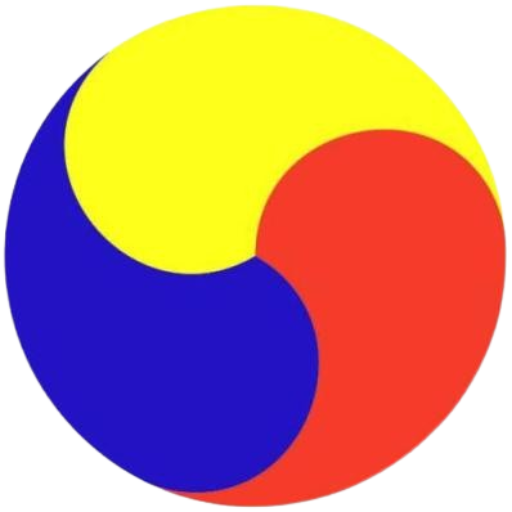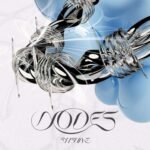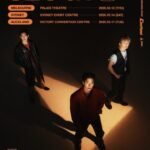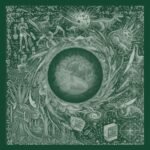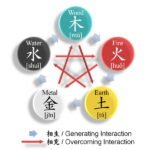Koguryo as the continental “relative” of the Japanese language, proposed by Christopher Beckwith in his 2004 book Koguryo: The Language of Japan’s Continental Relatives, claims that the ancient Northeast Asian kingdom of Koguryo (37 BCE–668 CE, or “Goguryeo” in modern Korean romanization) spoke a Japonic language closely related to Old Japanese (OJ), forming a “Japanese-Koguryoic” language family. For over 20 years, this theory has strongly influenced the Western, English-speaking world. However, a critical examination of this theory will show it has numerous issues with its speculative methodology and possible misinterpretation of place-name data. A broader and more methodical review of the evidence will show that Koguryo most likely spoke a Koreanic language
Issues with Beckwith’s Methodology
The problem starts with Beckwith’s selective use of roughly 140 possible Koguryo morphemes (i.e., basic word units), gleaned from the geographic monograph in the ancient Korean (e.g. Silla) source the Samguk Sagi. These include reconstructed lexical terms like mit (密, interpreted as ‘one’ in Old Japanese), wu/utsha (于次, ‘five’ in OJ), kolo (盧, ‘fortress’ in OJ) and yapa (山, ‘mountain’ or “yama” in OJ). The issue is that these morphemes are not uniformly related to OJ. Scholars like Alexander Vovin and John Whitman indicate that the balance of the lexical relationships slightly favors Koreanic over Japonic morphemes at a rate of 50 to 40%, respectively, with the remaining 10% being more Manchurian-related (either Tungstic or Siberian, e.g. from Juha Janhunen). These are based on reconstructions using Middle Chinese (MC) pronunciation of the Chinese characters that most scholars believed Silla used.
However, to boost the numbers, Beckwith rather unconventionally uses “Archaic Northeastern Middle Chinese,” a hypothetical niche form of Old Chinese (spoken roughly 1250–200 BCE), not MC (ca. 600–1000 CE) pronunciation, to reconstruct the words. Beckwith argues this is the dialect of Chinese that Koguryo would have used. Conveniently, this hypothetical variant of Old Chinese (OC) ends up giving a slight edge (50 to 40%) to Japonic sounding phonetics. Silla preserved the Koguryo place names around 750 CE, so the logic of using an OC variant is unusual, at best and potentially inaccurate, at worst. Most scholars, such as Vovin, Lee Ki-moon, and Nam Pung-hyun, assert that the most straightforward answer is Silla used MC to preserve the phonetics of the Koguryo place names in land they had conquered in 668 CE.
Moreover, Koguryo’s conquered land had a complex and layered history, complicating linguistic analysis. Originally held by the Mahan confederacy until ~350 CE, it was taken by Baekje, then Koguryo (~400 CE), and finally Silla (668 CE). This 50/40/10 split of place names reflects that complex history, which Beckwith interestingly omits. This reliance on mixed ethno-geographic data to come to monolithic linguistic conclusions is problematic and poses challenges. It would be as if we knew nothing about the English language and tried to reconstruct it using place name data in North America from the various Native American, Spanish, French and English geographic place names. That would create a misleading language profile, to say the least.
The Evidence that Contradicts Beckwith
Given these methodological issues, evidence from Koguryo’s own inscriptions and contemporary sources strongly supports a Koreanic classification. Although the kingdom of Silla compiled a history of Koguryo in their Samguk Sagi, there is sparse writing from Koguryo itself, except for two: the Gwanggaeto Stele (414 CE), erected in modern-day Jian, China, and the Jungwon Koguryo Stele (5th–6th century CE) erected in Chungju, South Korea. The Gwanggaeto Stele, erected to commemorate King Gwanggaeto’s conquests, reveals ∼ 60–70 Koreanic cognates inscribed in Late Old Chinese with phonetic elements (from Vovin and independently corroborated by Whitman). Reconstructed, these terms such as Kuknay (國內, ‘inner country’ ∼ Middle Korean kwuk) and Khwi-t (貴多, ‘fortress’ ~ Middle Korean ki) show strong Koreanic relationships. Vowel harmony (e.g., a-o in Hwan-to ‘round capital’) further aligns with Koreanic phonology. Furthermore, the grammatical particle (-i) appears frequently (e.g., 國內伊城, Kuknay-i-sng, ‘fortress of the inner country’), resembling Middle Korean (MK) genitive -uy or -i and Proto-Koreanic -i. This is agglutinative (i.e., building words by adding suffixes), typical of Koreanic but less so of Japonic (OJ uses -no). The corresponding Jungwon Stele offers sparser but corroborating terms like sng (城, ‘fortress’ ∼ MK’s sèng) and -i genitive, reinforcing Koguryo’s Koreanic nature.
Ancient Sources Confirm Koguryo’s Linguistic Relationship with Other Koreanic Kingdoms
Chinese sources confirm linguistic similarity between Koguryo and Baekje, another contemporaneous kingdom that shared the Korean peninsula with Koguryo. The Weilüe (3rd century CE) and Hou Hanshu (5th century CE) state that Baekje and Koguryo languages were “roughly similar” (大同小異, dà tóng xiǎo yì) and shared customs. The Book of Wei (6th century CE) notes Baekje’s language as “similar to Koguryo” but with more Chinese loan words. These contemporary observations indicate mutual intelligibility, or close dialectal proximity, within Koreanic, contradicting the Japonic relationship.
According to John Bentley, Japanese records, like the Nihon Shoki (720 CE), imply linguistic barriers between Baekje and Japanese, supporting Baekje’s Koreanic nature. Baekje words (e.g., oruk(u) ‘queen’ ~ MK el-Gi-, syema ‘island’ ~ MK syemR) are phonetically explained as foreign. Additionally, the Nihon Shoki groups Baekje with Koguryo and Silla as “Han” or “Koryo” peoples, implying a shared Koreanic cultural sphere, and notes Baekje’s unintelligibility with Japanese, again contradicting a Japonic link. If Koguryo was Japonic, then at least according to ancient Chinese sources Baekje must be Japonic too, but the Japanese evidence itself says it’s not.
Baekje’s Stele and Wood Tablet: Direct Koreanic Evidence
Baekje’s linguistic evidence reinforces Koguryo’s Koreanic ties. The Seoksu Stele (Baekje, ca. 600 CE) and Mireuksa wood tablet (Baekje, ca. 700–750 CE) provide direct linguistic clues. The Seoksu Stele’s morphology (e.g., genitive -uy, verbal endings) parallels Old Korean inscriptions, aligning with MK. The Mireuksa tablet lists numerals like hənah ‘one’ ~ MK hǎnáh, seyh ‘three’ ~ séyh, and nilgop ‘seven’ ~ ìlgòp, firmly Koreanic. Japonic-like tuph ‘two’ ~ Old Japanese huta and tasɔ ‘five’ ~ itu are sporadic, attributed to southern contact with Japonic speakers in the south of the Korean peninsula and not a Japonic core.
The Evidence is Clear: Koguryo’s Language was Koreanic
The evidence—Gwanggaeto Stele’s Koreanic lexicon/grammar, Jungwon Stele’s terms, Chinese sources’ Koguryo-Baekje similarity, Japanese records’ indicating linguistic barriers with Baekje, Seoksu Stele’s morphology, and Mireuksa tablet’s numerals—overwhelmingly supports Koguryo, and by extension Baekje, as a language firmly in the Koreanic family. Japonic-like terms (mit, tuph) are probable substrata from southern Peninsular kingdoms that spoke some Japonic but were eventually displaced by Koreanic migrations (~300 BCE), as per Vovin and Whitman. This model logically ties all the corresponding evidence together and rationally explains the data without Beckwith’s unconventional approach.
In conclusion, Beckwith’s theory’s Western hold stems from accessibility and first mover advantage, but the evidence clearly favors a Koreanic classification over Beckwith’s nonstandard methods. More focus on well-reasoned Northeast Asian epigraphy and comparative linguistics is needed to better advance our understanding of the ancient languages of that region, particularly in Western dialogue.
submitted by /u/Puzzled-Calendar-331
[link] [comments]
